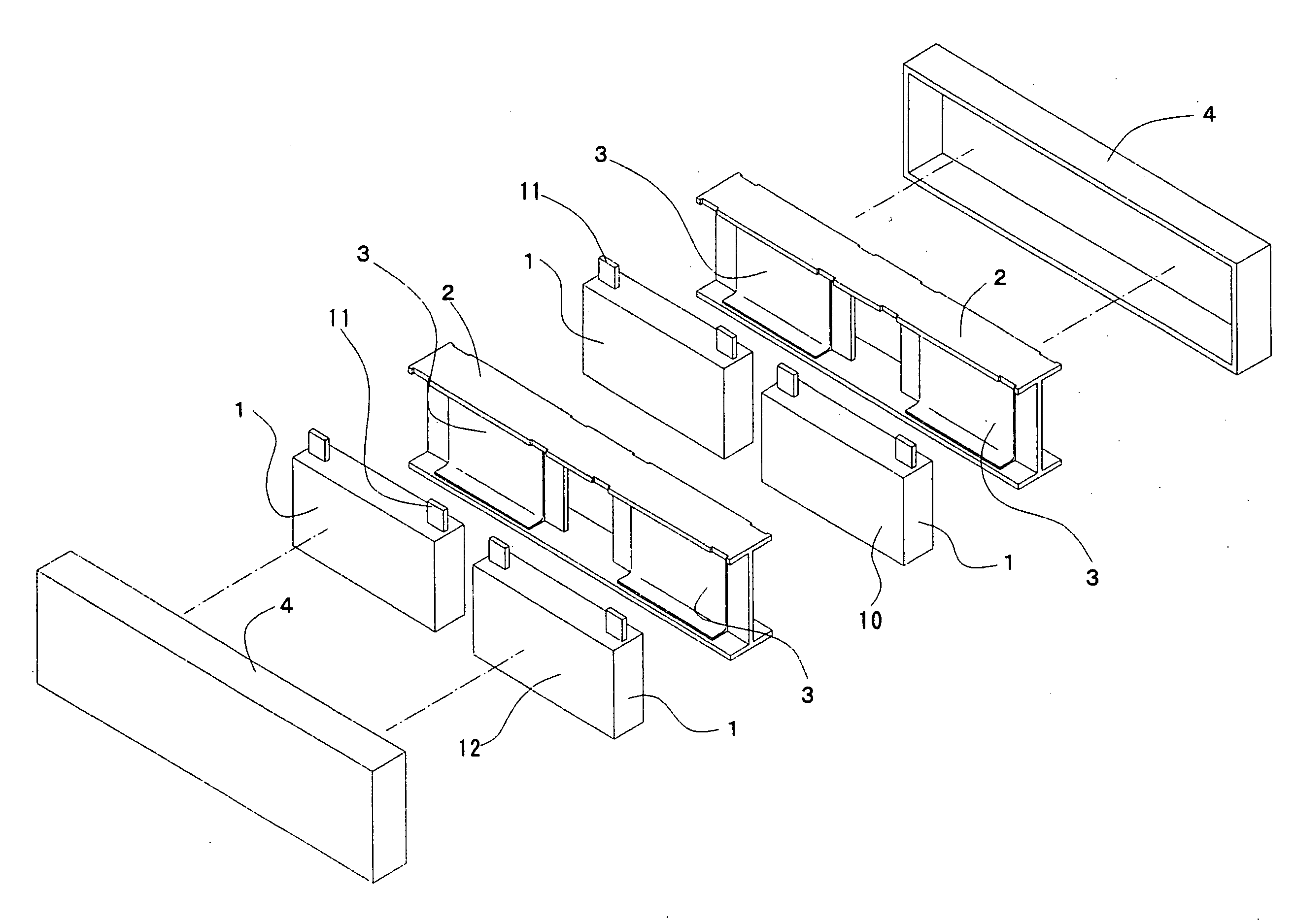Battery assembly
- Summary
- Abstract
- Description
- Claims
- Application Information
AI Technical Summary
Benefits of technology
Problems solved by technology
Method used
Image
Examples
examples
[0051]Hereinafter, the present battery assembly will be described in detail with reference to specific examples and experimental examples.
example no.1
Example No. 1
[0052]FIG. 1 illustrates a battery assembly according to Example No. 1 of the present invention in an exploded perspective diagram. The present battery assembly according to Example No. 1 comprises a few dozens of single-battery cells 1, spacers 2, and thermally-conductive members 3. The single-battery cells 1 are formed as a rectangular parallelepiped configuration, and have two largest-area side surfaces 12, respectively. The spacers 2 are made from electrically insulatable resin. A half of the single-battery cells 1 and thermally-conductive members 3 are disposed one after another alternately in a row, thereby making left-side battery subassembly in the drawing. The other half of the single-battery cells 1 and thermally-conductive members 3 are likewise disposed one after another alternately in a row, thereby making right-side battery subassembly in the drawing. The resulting two lines of battery subassemblies, the left-side and right-side battery subassemblies are d...
example no.2
Example No. 2
[0064]As illustrated in FIG. 4, a battery assembly according to Example No. 2 of the present invention comprises the thermally-conductive members 3 that are provided with tabs 34, which protrude from the bases 30 downward into the space 53. Except for this feature, the present battery assembly according to Example No. 2 is constructed in the same manner as the present battery assembly according to Example No. 1.
[0065]The present battery assembly according to Example No. 2 comprises the tabs 34 that make the surface areas of the bases 30 of the thermally-conductive members 3, which are exposed to the space 53, greater. Therefore, the present battery assembly according to Example No. 2 materializes a cooling efficiency, which is upgraded more than that the present battery assembly according to Example No. 1 does.
PUM
 Login to View More
Login to View More Abstract
Description
Claims
Application Information
 Login to View More
Login to View More - R&D
- Intellectual Property
- Life Sciences
- Materials
- Tech Scout
- Unparalleled Data Quality
- Higher Quality Content
- 60% Fewer Hallucinations
Browse by: Latest US Patents, China's latest patents, Technical Efficacy Thesaurus, Application Domain, Technology Topic, Popular Technical Reports.
© 2025 PatSnap. All rights reserved.Legal|Privacy policy|Modern Slavery Act Transparency Statement|Sitemap|About US| Contact US: help@patsnap.com



